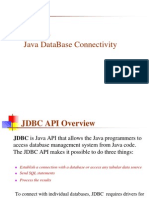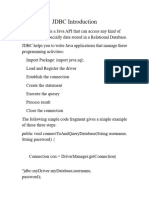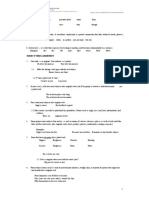0% found this document useful (0 votes)
9 views48 pagesJDBC Reference Notes
The document provides an overview of Java Database Connectivity (JDBC), detailing its purpose, drivers, and steps for connecting Java applications to databases. It explains the types of JDBC drivers, the process of establishing a connection, and includes examples for connecting to Oracle and MySQL databases. Additionally, it covers JDBC classes and interfaces, demonstrating how to store and retrieve images and files using Blob and Clob, respectively.
Uploaded by
2200030479csehCopyright
© © All Rights Reserved
We take content rights seriously. If you suspect this is your content, claim it here.
Available Formats
Download as DOCX, PDF, TXT or read online on Scribd
0% found this document useful (0 votes)
9 views48 pagesJDBC Reference Notes
The document provides an overview of Java Database Connectivity (JDBC), detailing its purpose, drivers, and steps for connecting Java applications to databases. It explains the types of JDBC drivers, the process of establishing a connection, and includes examples for connecting to Oracle and MySQL databases. Additionally, it covers JDBC classes and interfaces, demonstrating how to store and retrieve images and files using Blob and Clob, respectively.
Uploaded by
2200030479csehCopyright
© © All Rights Reserved
We take content rights seriously. If you suspect this is your content, claim it here.
Available Formats
Download as DOCX, PDF, TXT or read online on Scribd
/ 48






















































































